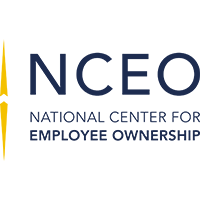A new analysis by the National Center for Employee Ownership shows that activity in employer in the last twelve months (July 2016 through July 2017). There were just eight new decisions involving employer stock in 401(k) plans, and 25 decisions involving employee stock ownership plans (ESOPs), all in private companies. Only some of these involved significant amounts of money. Two trends stand out: plaintiffs are having a very hard time prevailing in stock drop cases in public companies and the Department of Labor continues to challenge a handful of what it perceives as excessive prices paid for shares in closely held ESOP companies.
Courts Rejecting Plaintiffs in Stock Drop Cases
In 2014, the Supreme Court ruled that plaintiffs in cases where retirement funds in 401(k() plans and/or ESOPs were invested in employer company stock, trustees could no longer be presumed to be prudent with respect to the sale or holding of these securities. That seemed like it might be a victory for plaintiffs, but in FifthThird Bank v. Dudenhoeffer, the Court replaced that rule with a requirement that plaintiffs allege a plausible alternative course of action that fiduciaries could have taken with regard to employer stock that would have been better than what they chose to do. The ruling said fiduciaries cannot be required to outguess the markets, so the fact that the stock goes down substantially is not in itself a cause for action. Even if they have information that the stock price will likely go down, if selling stock would itself drive stock prices down, the fiduciaries still are not required to act.
Since then, plaintiffs have had a hard time prevailing, and in the 12-month period we covered, no luck at all. Two appeals courts and seven district courts all ruled that employees failed to meet the special pleading. In Whitley v. BP, PLC for instance, The Fifth Circuit dismissed claims that BP 401(k) plan fiduciaries should have disclosed inside information and/or frozen trades of BP stock in its 401(k) pan after the Deepwater Horizon disaster because if they did, stock prices would go down. In Saumer v. Cliffs Natural Resources Inc., the Sixth Circuit, rejected claims by employee participants in Cliffs Natural Resources for similar reasons after employees alleged they should have know the stock would likely fall. In Rinehart v. Lehman Bros. Holdings Inc., the Supreme Court declined to review an appeals court ruling against plaintiffs after a lower court also ruled against the plaintiffs. Plaintiffs had argued that SEC warnings about short sales should have met the special pleadings standards.
The same pattern held in district courts. In Martone v. Whole Foods Mkt., Inc., employees noted that company stock dropped 11% in one day after disclosure of a government investigation over pricing irregularities. A district judge, relying on the Fifth Circuit guidance in the BP case described above, ruled that 401(k) plan fiduciaries had no plausible alternative cause of action that would have done more good than harm. In In re 2014 RadioShack ERISA Litig., the court ruled the plaintiffs had not presented any new facts to show that there was inside information that would have been material that would have created a plausible alternative course of action.
In a later BP case, In re B.P. P.L.C. Sec. Litig., a federal district court went even further than other courts in a suit about employer stock in the company’s 401(k). Employees argued that BP executives could have disclosed safety risks or divert company stock to safer alternatives. The judge said none of the plaintiffs’ proposed alternative courses of action, including disclosure of impending problems, would meet the Dudenhoeffer standard. The judge ruled that plaintiffs must allege a course of action that that is “so clearly beneficial that a prudent fiduciary could not conclude that [the action] would be more likely to harm the fund than to help it,” and that no prudent fiduciary could have reached an alternative conclusion.
Finally, in Wilson v. Edison International, Inc, a district court ruled that two executives were not liable in a proposed class action over Edison stock in 1 401(k) plan because disclosing regulatory problem could have sent the stock price down.
ESOPs are much more common in private companies. They are most often used to purchase shares from one or more owners. The most significant litigation involves how much the ESOP pays. The price is determined by an independent outside appraiser and reviewed and approved by the ESOP trustee. In a limited number of cases, the Department of Labor has argued ESOPs overpaid for the shares in its initial purchase of shares. Although these have been high profile in the ESOP community, and have led some to charge the DOL is being too aggressive, it is important to note that only six such cases were decided in the last 12 months, one of which was a settlement, four that went against the defendants, and one that favored the defendant.
In Jessop v. Larsen, No. 2:14-cv-00916-BSJ, a court approved a $19.8 million settlement against executives of the failed multi-level juice marketing company MonaVie and ESOP trustee Bankers Trust. MonaVie acquired shares in 2010 with a 10% loan to buy $186.5 million in stock. The stock dropped to almost zero in two years as the company went bankrupt.
In Allen v. GreatBanc Trust Co., the Seventh Circuit overturned a lower court ruling that dismissed a case over an ESOP valuation at the ESOP for Personal-Touch Company. The company’s stock price dropped just over 50% after the valuation. GreatBanc, the plan trustee, argued that post-transaction declines in stock price are common because of the debt, much as equity value in a home declines after taking out a mortgage. Plaintiffs argued that GreatBanc failed to conduct an adequate investigation of the stock price and approved an interest rate on the ESOP loan two percentage points above what banks were normally charging. The case was remanded.
In a very detailed ruling that provides useful general guidance for trustees, in Fish v. GreatBanc Trust Company, a district court ruled in favor of the ESOP trustee, GreatBanc, and members of the Antioch Company board and family who previously owned stock outside of the ESOP. Antioch became a 100% ESOP in 2003, but after spectacular growth, experienced a downturn and went bankrupt. Plaintiffs sued, arguing that the ESOP paid too much for the stock and that the appraisal failed to account for a looming repurchase obligation (the requirement that the company buy back shares from departing employees). The 131-page ruling dismissed all claims, saying that the process the company and GreatBanc used met fiduciary standards, including through review of financial projections, and independent a multi-pronged process for assessing value.
Defendants were less successful in Brundle v. Wilmington Tr. N.A., Here a district court ruled that Wilmington Trust must pay $29.8 million to a terminated ESOP. The Constellis Group, which operated Triple Canopy, a major provider of international security services, became 100% ESOP owned in 2013. The deal was financed largely with seller note at 5% interest, with sellers getting a 25% claim on equity in return for the higher interest they argued the risk of the loan would have justified. Plaintiffs said the trustee, Wilmington Trust accepted a substantially inflated valuation, and failed to assess a valuation done a year before for valuing stock options that showed the company worth $100 million less. The court said Wilmington accepted unrealistic financial projections as valid and paid a 10% control premium when the ESOP, although a 100% owner, did not have full control because of covenants in the agreements protecting sellers. A loss of major contracts soon after the ESOP led Constellis and Wilmington to begin negotiations that led to the sale of the company and the termination of the ESOP six months after it was created. The stock price declined significantly between the two transactions.
Similarly, in Perez v. First Bankers Tr. Servs., Inc., a district court ordered First Bankers Trust (FBT) to pay almost $9.5 million to plaintiffs for failing to adequately protect the interest of ESOP participants by allowing the ESOP to overpay for the shares from the owners of SJP Services. The case revolved mostly around the reliability of company projections.
Other Cases
Two other cases are worth noting. In Hugler v. Vinoskey, a district court ruled that an employee of an independent ESOP trustee could be sued as a fiduciary individually because he made decisions independently. The decision is the first of its kind in ESOP law.
In Forte v. U.S. Pension Committee, the court ruled the plaintiff had purchased or sold Sanofil stock during the period of the alleged artificial price inflation and thus did not have standing.
FifthThird Bank v. Dudenhoeffer 134 S. Ct. 2459 (2014)
Whitley v. BP, PLC, No. 15-20282, (5th Cir., Sept. 26, 2016)
Saumer v. Cliffs Natural Resources Inc., No. 16-3449, (6th Cir., April 7, 2017)
Rinehart v. Lehman Bros. Holdings Inc., No. 16-562, (U.S., cert. denied Feb. 21, 2017)
Martone v. Whole Foods Mkt., Inc., No. 1:15-cv-00877-RP (W.D. Tex., Sept. 28, 2016)
In re 2014 RadioShack ERISA Litig., No. 4:14-cv-00959-O, (N.D. Tex , Sept. 29, 2016)
In re B.P. P.L.C. Sec. Litig., no. 4:10-cv-4214, (S.D. Tax., March 8, 2017)
Wilson v. Edison International, Inc, No. 2:15-cv-09139-JAK-PJWx, (C.D. Cal., June 6, 2017)
Jessop v. Larsen, No. 2:14-cv-00916-BSJ, (D-Utah, motion for preliminary settlement approval filed 11/15/16),
Allen v. GreatBanc Trust Co., 7th Cir., No. 15-3569, (Aug. 25, 2016)
Fish v. GreatBanc Trust Company, No. 09 C-1668 (D.C. N. Ill, Sept. 1, 2016)
Brundle v. Wilmington Tr. N.A., No. 1:15-cv-1494 (E.D. Va., March 3, 2017)
iPerez v. First Bankers Tr. Servs., Inc., No. 3:12-cv-04450 (D.N.J., March 17, 2017)
Hugler v. Vinoskey, No. 6:16-cv-00062, (W.D. Va., April 2, 2017)
Forte v. U.S. Pension Committee, No. 1:15-cv-04936 (S.D.N.Y., Sept. 30, 2016),




 i
i


